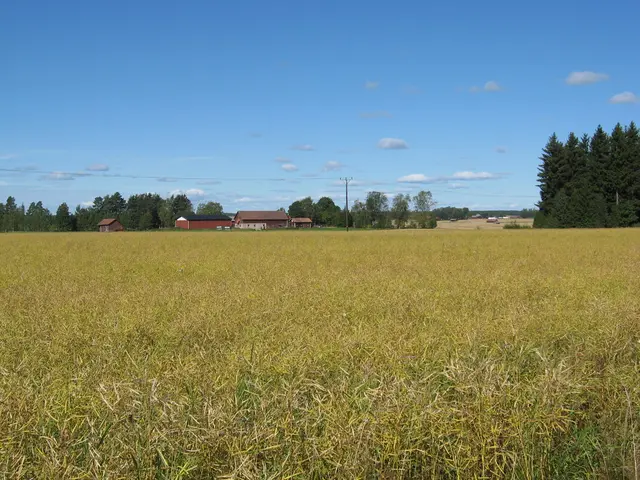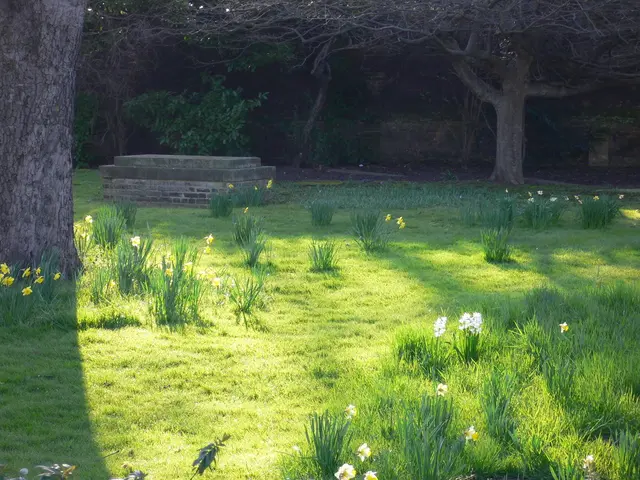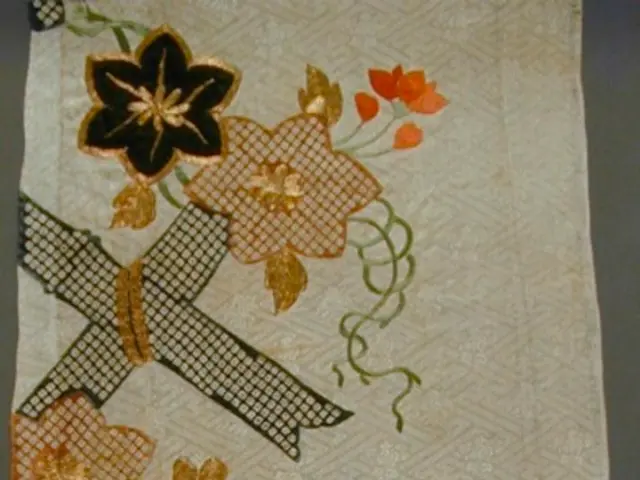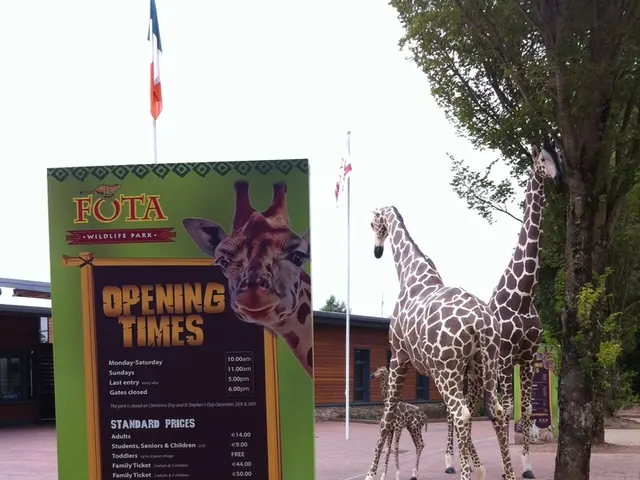Dual Encounters at Matimekush: Blending Traditional and Modern Societies
Raw Encounters, Unseen Paths Align: An In-depth Look at a Documentary Exploration
Raw connections, unforeseen paths that clash, yet intertwine, creating unique bonds and vibrant cultural interchanges. All this, unfolding in an environment as inhospitable as it is grand. In his feature-length documentary Matimekush, filmmaker Guillaume Sylvestre delves into the unusual bond that forms between Innu children and foreign teachers at the local secondary school.
It all started casually a few years ago, when Guillaume Sylvestre was working on another project in the deserted mining town of Schefferville. In these forsaken lands, over 700 kilometers north of Sept-Îles, there isn't much left except for the Innu community of Matimekush today.
"We were filming outside, and at one point, I see this towering African man zipping over a snowbank on a Ski-Doo with an Innu who just came back from hunting. There's this Moroccan lad playing hockey, chatting with his sister, and the local youth—all switching between Arabic and Innu dialects. And I'm left thinking, 'What the hell is going on here?'" Guillaume Sylvestre recalls in an interview with Le Devoir.
He soon discovers that almost all the teachers at Kanatamat School hail from abroad. He networks with them and the community members. "Everything seems awkward and improbable in the encounter of these two diverse realms, yet much binds them together. I thought, 'What an intriguing subject!'"
Taking the Time
Over a dozen times, he traveled to shoot in this school to chronicle the journey of the staff and students in grade 10 throughout a full academic year. We witness the arrival of the teachers, their struggles, the hurdles they face, their exploration of Innu culture, and their transformation. We see fresh teachers grappling with student absences, tardiness, insults, and lack of motivation. "These kids, they're often abandoned," the documentarian summarizes. "So, when a new teacher arrives, they test you. They want to break you."
Unlike most non-Indigenous teachers, those from immigrant backgrounds persevere, Guillaume Sylvestre explains, because "they locate common values with the Innus - community, animism - and all the colonial history."
It's here that the magic happens. He gives the example of Judeleine, a Haitian French teacher who's faced a life filled with hardship. "These teachers, they've seen it all, so getting rebuffed by an Innu teenager is like water off a duck's back for them."
A long-time teacher tells Judeleine at a staff meeting where she's discussing the challenge of getting students to follow rules, "You're a newcomer. It takes two, three, or four years to adapt. You've gotta persevere. You've gotta swallow a lot of bitterness to remain calm."
Exchanges on the Land
Throughout the film, we see teachers opening up to students, sharing their life struggles, their battles, and those of their peoples against oppression, colonialism, slavery. Connections form—in class, yes, but especially during a winter expedition on the land. In the warmth of the tent, discussions flow easier. The youth seem comfortable, cooking bannock and butchering caribou. The teachers are thrilled to witness their enthusiasm and hear them laugh.
However, the documentary Matimekush isn't a critique of the education system, assures Guillaume Sylvestre, but it provokes reflection, particularly in staff discussions. "That's the whole dilemma: this school, a bit conventional like southern schools, does it work? It works moderately when they're in school. But when we see them out in the woods, suddenly, they're completely transformed."
This excursion was a significant moment for the filmmaker, just as his encounter with Conrad, the professor of Innu culture, was a powerful one. "He's a very remarkable individual and a nice guy," Guillaume Sylvestre confides. "Conrad, and generally all the Innus from that part, they're very proud, but without anything ostentatious. It's truly visceral. So, we see Conrad, who's traditional, but without imposing lessons. That aspect touched me."
The documentary Matimekush is scheduled to hit the screens on May 2 in Montreal and Quebec.
Suggested for you
Up to 40 cm of snow expected in Quebec starting Wednesday evening
The City of Montreal recommends avoiding travel on Thursday due to weather conditions.Kamala Harris denounces the "selfish" start of Donald Trump's term
The former democratic nominee for the presidency criticizes the presidential actions in her first major speech since her defeat.The eldest woman in the world, an English lady, has died at 116 years old
The new eldest woman is now a Brazilian nun. To watch in video
Enrichment Data:
Overall:
Here's a detailed look at immigrant teachers in Matimekush (Lac-John), Quebec, and their impact on Innu students:
1. Matimekush Context
Matimekush (officially Matimekosh-Lac John) is a First Nations reserve in northern Quebec, part of the Innu Nation. Key characteristics include:- Population: ~850 Innu residents (predominantly Atikamekw Innu)- Language: Innu-aimun (still frequently spoken)- Education Challenges: High dropout rates, intergenerational trauma from residential schools, and curriculum gaps in cultural relevance.
2. Immigrant Teacher Backgrounds
Quebec draws teachers worldwide, including from France, Haiti, Morocco, and francophone Africa. In remote communities like Matimekush, foreign teachers often come through:- Quebec’s Provincial Recruitment Programs: Targets French-speaking educators for underserved regions.- NGO Partnerships: Organizations like Teach For Canada focus on northern/Indigenous communities.- Incentives: Housing subsidies, relocation bonuses, and loan forgiveness for remote postings.
3. Cultural Impacts on Innu Students
🔹 Positive Contributions
- Diversity Exposure: Presents global perspectives, sparking curiosity and expanding students’ worldviews.
- Language Support: French proficiency (essential for Quebec’s curriculum) is bolstered, aiding post-secondary opportunities.
- Resilience Modeling: Immigrant teachers' stories of adaptation can motivate students navigating their dual cultures.
🔹 Challenges
- Cultural Misalignment:
- Teaching Styles: Immigrant teachers may employ authoritative methodologies conflicting with Innu communal learning traditions.
- Curriculum Gaps: Lack of Indigenous knowledge (e.g., land-based skills, oral histories) in standard Quebec syllabi.
- Implicit Bias: Accidental reinforcement of colonial narratives (e.g., Eurocentric history emphasis).
- Community Distrust: Historical trauma from prior educators (e.g., residential schools) may initially create barriers.
4. Successful Integration Strategies
- Cultural Safety Training: Mandatory workshops on Innu history, trauma-informed teaching, and local dialects.
- Mentorship Programs: Pairing immigrant teachers with Innu elders/educators (e.g., shared lesson planning).
- Two-Way Learning: Encouraging teachers to take part in community activities (hunting, crafting) to build trust.
- Curriculum Co-Development: Incorporating Innu-authored materials (e.g., Joséphine Bacon’s poetry) in French classes.
5. Case Study: Collaborative Initiatives
- Pirursiimik Iluissarniq ("Growing Together"): A Quebec program funding Indigenous-led teacher training and language revitalization.
- Innu-Aimmun Literacy Projects: Foreign teachers help in creating bilingual resources (French/Innu-aimun) for STEM subjects.
6. Recommendations
- Recruit Diaspora Educators: Prioritize teachers with experience in Indigenous or marginalized communities (e.g., Haiti’s Kreyòl initiatives).
- Advocacy: Advocate for Québec’s Ministry of Education to expand funding for Indigenous-language immersion programs.
- Long-Term Commitment: Encourage 3–5-year teacher contracts to ensure continuity in relationships.
By blending global and local viewpoints, foreign educators can help decolonize education while preparing Innu youth for a multicultural world. Success hinges on humility, reciprocity, and centering Innu voices in school governance.
The French teacher, Judeleine, who has endured a life of hardship, finds a unique bond with her Innu students. Her resilience mirrors that of the Innus and makes her comprehend their struggles more intimately.
The home-and-garden of the Matimekush school is a melting pot of diverse cultures, with teachers from Haiti, Morocco, and other francophone Africa nations sharing a common ground with the Innu community. This fusion fosters a sustainable living environment that respects and promotes indigenous values and beliefs.
The snowbank of the Canadian wilderness serves as a symbolic stage for the exchange of stories, experiences, and life lessons between teachers and students. The winter expedition on the land transcends the classroom and creates an environment conducive to discussions about oppression, colonialism, and discrimination.
Immigrant teachers from different backgrounds bring a fresh perspective to the education System in Matimekush. Their presence elevates the school's lifestyle and creates a home-and-garden atmosphere where diverse cultures thrive and intersect, imparting a visceral understanding of the world and its societies.








